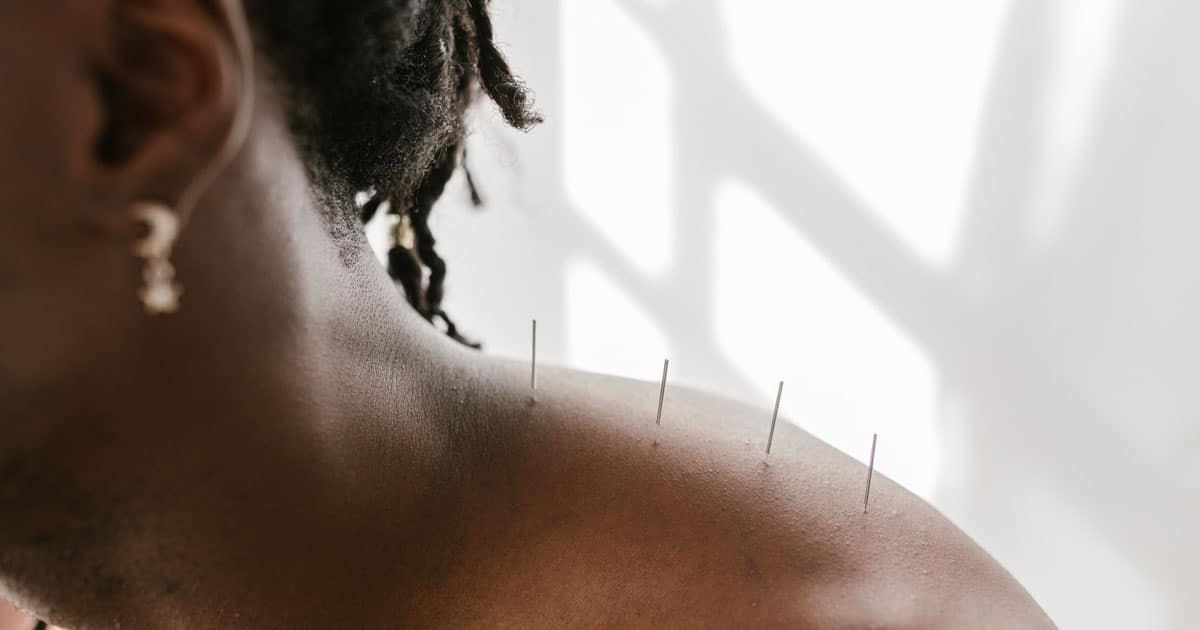Acupuncture is a part of traditional Chinese medicine. These medical practices have been used for 5,000 years or more. In Hong Kong and mainland China, about 60% of the population has visited a traditional medicine specialist at least once.
In Taiwan, herbal medicines and acupuncture are the two most common forms of TCM in use. And acupuncture is used as an alternative or complementary medicine in the West too.
Many studies have been conducted into the science behind traditional Chinese medicine, including by MIT. Yet, despite evidence showing the effectiveness of acupuncture, many myths persist.

Why have myths sprung up about acupuncture?
Acupuncture is just one part of TCM but it is possibly the most well-known area after herbal medicine. TCM involves a number of areas including cupping and moxibustion. But, massage and acupuncture are the most commonly used parts of TCM in the US.
It is common for new ideas to be viewed with suspicion, but acupuncture is thousands of years old and is practiced in modern clinics now. Anyone can visit an acupuncture clinic in Berkeley and discuss how their symptoms may be helped through this form of traditional medicine.
Myths spring up from fear of the unknown or a lack of understanding.
5 Myths surrounding acupuncture
Traditional medicine from around the world is often linked to natural elements and the body’s own inner energy. Yoga has five elements, which are earth, fire, water, air, and ether. In TCM, the elements are almost the same; wood, fire, earth, metal, and water.
Yet, while yoga has been embraced, acupuncture is still divisive. Both are ancient practices that helped to heal the body and improve physical health and yet one has certain myths attached to it. Here are five popular myths about acupuncture, and what the truth is.
1. Acupuncture hurts
Acupuncturists aim to make their patients feel as comfortable as they can. The needles used in acupuncture come in different sizes, and if anyone feels any discomfort these can be changed to suit.
However, the majority of people feel no pain, and many patients have been known to fall asleep during the procedure as they are so relaxed. Indeed, acupuncture is known to relieve pain, not cause it.
2. Acupuncture has limited uses
Possibly the most familiar use of acupuncture is to relieve pain. The needles used in acupuncture stimulate sensory nerves which in turn release endorphins that numb the pain a patient may be feeling.
Yet, acupuncture has far more uses than just pain relief. Acupuncture can be used for the following and more:
- Nausea
- Migraine
- Infertility
- Irritable bowel syndrome
- Menopause symptoms
- Depression
- High blood pressure
- Menstrual cramps
- Allergies
- Morning sickness
The side effects of chemotherapy treatment such as vomiting and nausea may be helped through the use of acupuncture.
Many doctors in the US are also certified acupuncturists. One way of attracting more people to medical clinics is to offer a wider range of services. The American Academy of Medical Acupuncture can refer acupuncturists who are also qualified medical doctors. Being able to speak with a licensed doctor who understands acupuncture will be of great benefit to many patients.
3. Needles are big and cause scarring
Acupuncture needles come in different sizes, however, none of them are as big as you might be imagining. Many people are scared of hypodermic needles, and there is a myth that acupuncture needles are similarly sized.
Acupuncture needles can be 10 times smaller than hypodermic needles, and are as thin as 0.12 mm. Acupuncture needles are roughly the thickness of a strand of hair.
Also, acupuncturists are highly trained to use these needles. There is no reason that acupuncture should leave scars, and in fact, the opposite may be true. Acupuncture is being used now to treat scar tissue, and improve the appearance of scarring.
4. Needles are re-used on other patients
This is one myth that needs to be laid to one side. Acupuncturists must dispose of needles after one use. There is no need to disinfect acupuncture needles because they are not allowed to be reused.
Every patient in an acupuncture clinic will receive new needles for their session, and these needles need to meet federal regulations.
5. Acupuncture isn’t recognized by the medical profession
Alternative medicines have had a hard time despite being practiced for a millennia. However, acupuncture is not only accepted by many medical professionals, it is often recommended as a treatment by doctors.
The WHO advises acupuncture for over 100 ailments. The WHO also outlined benchmarks for acupuncture practice.
More medical professionals today are exploring complementary medicines to help their patients. Dismissing other forms of medicine such as TCM only limits a patient’s options.
Summary
Acupuncture is used by millions of people across the planet. Even just in the US, millions of acupuncture treatments are given each year to help patients with pain relief and symptoms of various ailments.
There are a fair few myths surrounding acupuncture, but it is easy to debunk these. And as a form of complementary medicine, it would be a shame to overlook potential health benefits due to myths.
